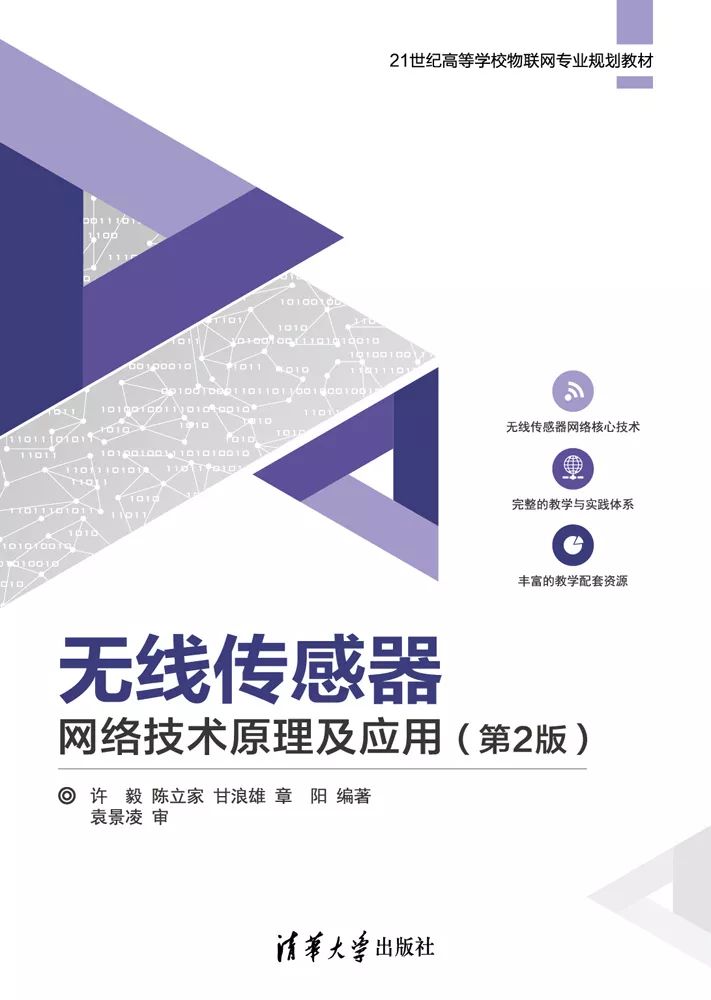
Teaching Syllabus for “Principles and Applications of Wireless Sensor Network Technology”
Course Name: Wireless Sensor Networks
Class Hours/Credits: 40/2.5
Prerequisites: Analog Circuits, Computer Networks, Communication Principles, Operating Systems, Microcomputer Principles and Interface Technology, C Programming Language
Applicable Major: Internet of Things Engineering
Does it include in-class experiments: Yes
1. Course Nature and Tasks (Tasks to be completed by students)
This course aims to comprehensively and systematically explain the basic principles of various mainstream wireless sensor networks, combining multiple wireless sensor network development platforms, and to elucidate the basic technologies of wireless sensor networks in an accessible manner. The content taught strives to reflect the latest developments in this field both domestically and internationally, emphasizing the integration of theory with practice and principles with applications. Wireless sensor networks are one of the most active sectors in the modern communication industry. This course introduces the system composition, network technologies, protocols, development platforms, and applications of wireless sensor networks. By studying this course, students should achieve the following objectives:
-
Master the basic concepts, theories, and fundamental analysis and design methods related to wireless sensor networks;
-
Have a good grasp of the supporting technologies, operating systems, and development platforms for various wireless sensor networks;
-
Understand the networking and communication technologies of wireless sensor networks, and master the technical standards of routing protocols and network protocols;
-
Master practical development cases of wireless sensor networking in a ZigBee environment;
-
Further understand the latest developments and applications of wireless sensor networks, such as massive storage and heterogeneous sensor network technologies.
2. Basic Course Requirements (Content students are required to master, highlighting key points)
(1) Teaching Content
Chapter 1 Overview of Wireless Sensor Networks
Basic concepts of wireless sensor networks, characteristics of wireless sensor networks, working principles of wireless sensor networks, applications of wireless sensor networks
Chapter 2 Basic Knowledge of Micro Sensors
Introduction to common sensors, characteristics and selection of sensors, applications of micro sensors
Chapter 3 Software/Hardware Design of Wireless Sensor Networks
Hardware design of wireless sensor network nodes, design of sensing nodes (gateway and aggregation nodes, typical nodes), software technologies for wireless sensor network nodes (software architecture, middleware, operating systems), experimental technology platforms for wireless sensor networks
Chapter 4 Structure and Coverage of Wireless Sensor Networks
Structure of wireless sensor networks (flat structure, hierarchical structure, hybrid structure), coverage of wireless sensor networks, basic concepts of coverage, coverage models, coverage metrics, coverage algorithms
Chapter 5 Supporting Technologies for Wireless Sensor Networks
Time synchronization technology (basic concepts of time synchronization, analysis of synchronization information transmission delay, synchronization algorithms, estimation of synchronization model parameters), positioning technology (source localization algorithms, node self-localization, matching localization, examples of typical localization systems), data fusion (classification, main methods, design of multi-data fusion gateways), energy management (energy-saving methods, energy management of nodes), fault tolerance technology (fault models, detection, repair)
Chapter 6 Communication and Network Technologies of Wireless Sensor Networks
Physical layer, data link layer (contention-based MAC protocols, scheduled MAC protocols)
Chapter 7 Protocol Standards for Wireless Sensor Networks
Significance of technical standards, IEEE 1451 series standards, IEEE 802.15.4 standards, ZigBee protocol standards, Bluetooth, UWB
Chapter 8 Routing Protocols for Wireless Sensor Networks
Classification of routing protocols, flat routing protocols (several typical flat routing protocols, comparison of flat routing protocols and clustered routing protocols), clustered routing protocols for wireless sensor networks (network structure of clustered routing protocols, energy consumption analysis of nodes in clustered networks, performance evaluation of clustered routing protocols, several typical clustered routing protocols)
Chapter 9 ZigBee Practical Development Technologies
ZigBee hardware platform (overview of CC2430/CC2530, main features of CC2430/CC2530 chips, functional structure of CC2430/CC2431 chips, association of CC2430 with 8051), CC2430 development environment IAR (software installation, usage, example execution), development practice – environmental monitoring (overall system plan, system experimental platform construction, system debugging and implementation), development based on ZigBee protocol stack (introduction to protocol stack architecture, ZigBee protocol stack development API, ZigBee Device Profile API, operation of peripheral components)
Chapter 10 Information Collaborative Processing Technologies for Wireless Sensor Networks
Collaborative sensing methods (theoretical basis of collaborative sensing, homogeneous collaborative sensing, heterogeneous collaborative sensing, case studies of collaborative sensing algorithms, collaborative sensing system architecture for WSN), massive data processing technologies (collaborative network architecture based on massive data, storage and management of massive data, knowledge acquisition from massive data)
(2) Basic Teaching Requirements
The main goal of the course is to help students understand the basic principles, architectures, routing, protocols, development environments, supporting technologies, and challenges faced by wireless sensor networks, while deepening their understanding of specific wireless sensing technologies through theoretical and practical teaching methods. This course mainly discusses the basic technologies of wireless sensor networks and continuously analyzes the principles of specific wireless sensor networks; emphasizing understanding and application.
3. Course Hour Distribution
|
Course Content |
Class Hours |
|
Overview of Wireless Sensor Networks |
2 |
|
Basic Knowledge of Micro Sensors |
2 |
|
Software/Hardware Design of Wireless Sensor Networks |
4 |
|
Structure and Coverage of Wireless Sensor Networks |
2 |
|
Supporting Technologies for Wireless Sensor Networks |
4 |
|
Communication and Network Technologies of Wireless Sensor Networks |
4 |
|
Protocol Standards for Wireless Sensor Networks |
4 |
|
Routing Protocols for Wireless Sensor Networks |
2 |
|
ZigBee Practical Development Technologies |
6 |
|
Information Collaborative Processing Technologies for Wireless Sensor Networks |
2 |
|
Total |
32 |
4. Course Features (including teaching content, methods, etc.)
This course comprehensively introduces the core technologies of widely used wireless sensor networks, with a wealth of content and rapid updates. Therefore, during teaching, attention should be paid to the connection between theory and practice, strengthening students’ hands-on training.
Theoretical teaching is conducted entirely through multimedia, and practical sessions allow students to build a wireless sensor network application system themselves, analyzing experimental data.
The teaching components of this course include classroom lectures, assignments, self-study, experimental operations, application task (solution) design, group projects, exams, etc. In terms of teaching methods, appropriate application case analyses should be included when discussing relevant theoretical knowledge; in terms of teaching tools, multimedia should be used for explanations and demonstrations, combined with experimental case explanations.
5. Course Assessment Methods (including content, methods, and corresponding proportions)
Regular assignments are to be completed as major projects, requiring free topic selection according to the “CDIO engineering model,” with topics related to wireless sensing, designed in groups of 3-5, and submitted as a paper document;
Exams will be closed-book, covering all taught content and reflecting students’ abilities to analyze and solve problems.
Overall grade assessment ratio: Regular performance20%(major projects,class attendance),experiments10%,final assessment70%.
6. Reference Textbooks

Authors: Xu Yi, Chen Lijia, Gan Langxiong, Zhang Yang
Price: 59.50 RMB
ISBN: 9787302459910
Provides PPT courseware, Word teaching plans, teaching syllabus, answers, final exam papers
This book is written based on the development direction and teaching needs of the undergraduate major in Internet of Things Engineering, combined with the latest technological developments and application status of wireless sensor network technology, mainly introducing the basic concepts of wireless sensor networks, development environments, topology control and coverage technologies, communication and networking technologies, supporting technologies, technical standards of protocols, security technologies, access technologies, applications, and the relationship between wireless sensor networks and the Internet of Things.
The content of this book is rich, wide-ranging, and easy to understand, emphasizing not only basic concepts and foundational technologies but also the application of technologies and practical teaching content, striving for accurate concepts and a combination of text and images.